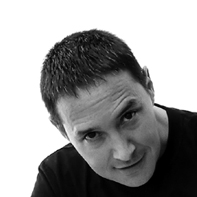11 Sep Mauricio Lara: How are ideas born?
 When they ask me how ideas are born, or the ever recurrent and hollow question: “what is your inspiration when you design?”, I find myself pondering the subject on two levels.
When they ask me how ideas are born, or the ever recurrent and hollow question: “what is your inspiration when you design?”, I find myself pondering the subject on two levels.
I believe ideas can come from different sources, and I do not think that there is a rule or formula to come up with a good idea when it is time to do a design. As Picasso said, “inspiration exists, but it must find us at work.” How right the master was… One has to work for the idea to arrive. That idea, which once intuited is recognised as good, and that sets the foundations from the project.
I believe that as designers we have to imbibe as much information as possible on the subject we are working on, learning what is already available in the market, what others have done, the context in which the object is used, the characteristics of the user, picturing different scenarios and possibilities, always wondering “What if…?” Or, “What if on the contrary…?” To be open to creative experimentation, to the search of new languages to interpret situations, to devise experiences in the use of the object or the perception or living of the space.. Nowadays, design ideas need to transform into an experience for the user, we have to innovate and this entails developing new languages, to imagine something different from what we have learned or what we have been exposed to.
In my projects there is always a concept that supports the ideas, the forms and the materials. It is the concept that gives the design a reason to exist; without it, the idea would be a void.
But how can one reach this concept? Therein lies the crux of the issue, and the magic of creation, and I believe that the spark catches better the more material we have to process. This is why I say that we need to have plenty of information, so it can be transformed into good ideas. For me, design is rather a process that involves gathering information, analysing it and using it to reach a conclusion. If it were possible to chart this mental process, it would trace a spiral in which the longer we advanced, the closer we would be getting to the solution. That is what design is: a mental process that generates ideas. Designing is not drawing or having good skills for 3D software; those are tools and participate in the development of the design through our analytical thought. That is, first there is design as an idea, a concept, as information, and once that is in place come the assembly work, as I call it, the drawing and modelling.
In my work as a teacher I never give my students the answer to the design question, as is customary in schools all over the world; that is, I never tell them, for example, that now we have to design a piece of furniture for the foyer… This would be giving them the answer. Instead, I think it better to ask them and generate an investigation about what are the ten activities that people engage in before leaving the house, and the first ten that they do when they get back… Perhaps upon reflecting on this we realise that it is not necessary to design any furniture for the foyer, perhaps what the market needs is an object for the mobile phone charger… We will only be able to define that once we have gathered the information and gone through the mental process described above.
However, as I mentioned at the beginning, there are no magical recipes or formulas to come up with a good idea. What I can guarantee, and has been a constant in my projects, is the following:
Design has meaning: It enters through your eyes,You speak of it with your mouth, It is touched by the hands, And valued with the heart.
More: www.articulado.org

